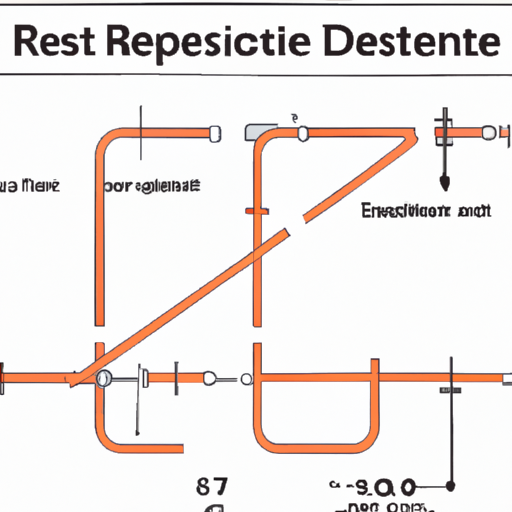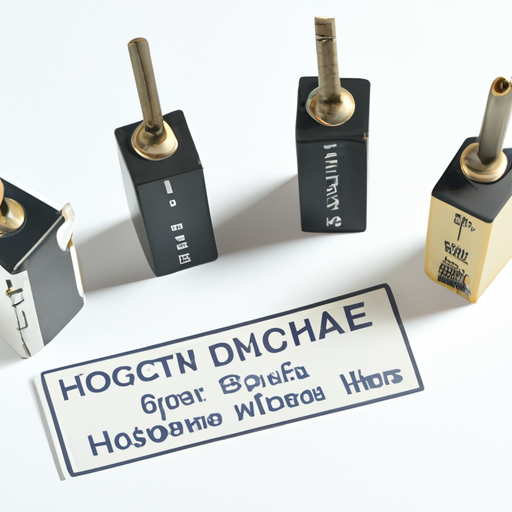What Industry Product Does the Resistor Model Belong To?
I. Introduction
In the realm of electronics, resistors are fundamental components that play a crucial role in the functionality of circuits. A resistor is a passive electrical device that limits or regulates the flow of electrical current in a circuit. Their importance cannot be overstated, as they are essential for controlling voltage and current levels, ensuring that electronic devices operate safely and efficiently. The resistor model, which represents the behavior of resistors in various conditions, is relevant across multiple industries, from consumer electronics to automotive systems. This blog post will explore the intricacies of resistors, their applications, and the industries that rely on them.
II. Understanding Resistors
A. Basic Principles of Resistance
At the heart of resistor functionality lies the principle of resistance, which is defined as the opposition to the flow of electric current. This relationship is quantitatively described by Ohm's Law, which states that the current (I) flowing through a conductor between two points is directly proportional to the voltage (V) across the two points and inversely proportional to the resistance (R). Mathematically, this is expressed as:
\[ V = I \times R \]
Resistors come in various types, including fixed resistors, which have a constant resistance value, and variable resistors, such as potentiometers, which allow for adjustable resistance.
B. Construction and Materials Used in Resistors
The construction of resistors varies based on their type and intended application. Common materials used in resistors include:
1. **Carbon Composition**: These resistors are made from a mixture of carbon and a binding material. They are known for their high energy absorption but have a relatively high tolerance.
2. **Metal Film**: Metal film resistors are made by depositing a thin layer of metal onto a ceramic substrate. They offer better precision and stability compared to carbon composition resistors.
3. **Wire-Wound**: These resistors are constructed by winding a metal wire around a core. They are capable of handling high power levels and are often used in applications requiring high precision.
C. Key Specifications and Ratings
When selecting a resistor, several key specifications must be considered:
1. **Resistance Value**: Measured in ohms (Ω), this indicates how much the resistor opposes current flow.
2. **Power Rating**: This specifies the maximum power the resistor can dissipate without being damaged, typically measured in watts (W).
3. **Tolerance**: This indicates the accuracy of the resistor's resistance value, expressed as a percentage. A lower tolerance means a more precise resistor.
III. The Resistor Model in Electronics
A. Theoretical Framework of the Resistor Model
The resistor model can be understood through its theoretical framework, which includes the distinction between linear and non-linear resistors. Linear resistors obey Ohm's Law, meaning their resistance remains constant regardless of the voltage or current. In contrast, non-linear resistors exhibit varying resistance based on the applied voltage or current.
Equivalent circuit models are also essential for understanding how resistors interact with other components in a circuit. These models simplify complex circuits into manageable representations, allowing engineers to analyze and design circuits effectively.
B. Applications of the Resistor Model in Circuit Design
The resistor model finds numerous applications in circuit design, including:
1. **Voltage Dividers**: Resistors can be used to create voltage dividers, which allow for the distribution of voltage across multiple components.
2. **Current Limiting**: Resistors are often employed to limit the current flowing to sensitive components, protecting them from damage.
3. **Signal Conditioning**: In signal processing, resistors help shape and modify signals to ensure they meet the required specifications for further processing.
IV. Industries Utilizing Resistor Models
A. Consumer Electronics
In the consumer electronics sector, resistors are ubiquitous. They are found in smartphones, tablets, and home appliances, where they help regulate power and ensure the safe operation of devices. For instance, resistors are used in charging circuits to prevent overcurrent situations that could damage batteries.
B. Automotive Industry
The automotive industry heavily relies on resistors for various applications, particularly in electronic control units (ECUs) and safety systems. Resistors are crucial for managing the electrical systems in vehicles, including anti-lock braking systems (ABS) and airbag deployment mechanisms, ensuring they function correctly and safely.
C. Telecommunications
In telecommunications, resistors play a vital role in signal processing and network equipment. They help maintain signal integrity and prevent interference, which is essential for reliable communication systems. Resistors are used in routers, switches, and other networking devices to manage data flow and ensure optimal performance.
D. Industrial Automation
The industrial automation sector utilizes resistors in control systems and robotics. Resistors are integral to sensors and actuators, helping to regulate signals and ensure precise control over machinery. This is particularly important in manufacturing processes where accuracy and reliability are paramount.
E. Medical Devices
In the medical field, resistors are found in diagnostic equipment and monitoring systems. They help regulate electrical signals in devices such as ECG machines and blood pressure monitors, ensuring accurate readings and safe operation for patients.
V. Advancements in Resistor Technology
A. Innovations in Materials and Manufacturing
Recent advancements in resistor technology have led to innovations in materials and manufacturing processes. Thin-film technology, for example, allows for the production of highly precise resistors with improved performance characteristics. Surface-mount resistors have also gained popularity due to their compact size and ease of integration into modern circuit boards.
B. Smart Resistors and Their Applications
The emergence of smart resistors represents a significant leap forward in resistor technology. These adaptive components can adjust their resistance based on environmental conditions or circuit requirements. Smart resistors are particularly useful in Internet of Things (IoT) devices, where they can optimize power consumption and enhance overall system performance.
VI. Challenges and Considerations
A. Thermal Management in Resistor Applications
One of the primary challenges in using resistors is managing heat dissipation. Resistors convert electrical energy into heat, and excessive heat can lead to component failure. Proper thermal management strategies, such as heat sinks and thermal pads, are essential to ensure reliable operation.
B. Impact of Resistor Tolerances on Circuit Performance
The tolerance of a resistor can significantly impact circuit performance. In precision applications, even small variations in resistance can lead to substantial errors. Engineers must carefully select resistors with appropriate tolerances to meet the specific requirements of their designs.
C. Environmental Considerations and Sustainability
As industries move towards more sustainable practices, the environmental impact of resistor manufacturing and disposal is becoming increasingly important. Manufacturers are exploring eco-friendly materials and processes to reduce waste and energy consumption, contributing to a more sustainable electronics industry.
VII. Conclusion
In summary, the resistor model is a cornerstone of electronic design, with significant implications across various industries. From consumer electronics to medical devices, resistors play a vital role in ensuring the functionality and safety of countless applications. As technology continues to advance, the future of resistor technology looks promising, with innovations in materials and smart components paving the way for more efficient and reliable electronic systems. Understanding resistor models is essential for engineers and designers, as it enables them to create circuits that meet the demands of modern technology while addressing challenges such as thermal management and sustainability.
VIII. References
1. Academic journals and articles on electronics and circuit design.
2. Industry reports and white papers discussing advancements in resistor technology.
3. Books on electronics, circuit design, and the applications of resistors in various industries.
This comprehensive exploration of resistors and their applications highlights their significance in the electronic landscape, emphasizing the need for continued innovation and understanding in this critical field.












